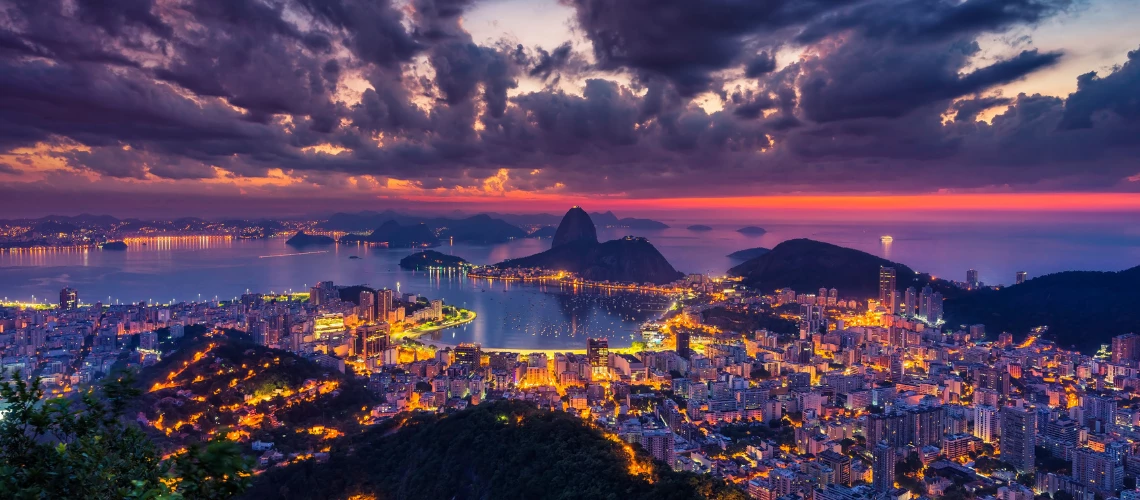 In Brazil, the GIF, in partnership with IFC, the World Bank, federal government, and CAIXA, one of Brazil’s public banks, supported the structuring and procurement of public street lighting modernization projects across 12 Brazilian municipalities. © shutterstock / marchello74
In Brazil, the GIF, in partnership with IFC, the World Bank, federal government, and CAIXA, one of Brazil’s public banks, supported the structuring and procurement of public street lighting modernization projects across 12 Brazilian municipalities. © shutterstock / marchello74
Infrastructure is the pulse of modern societies. Access to energy, transport, digital networks, clean water, schools, and hospitals is imperative for inclusive growth and poverty alleviation on a livable planet. Achieving the 2030 Sustainable Development Goals and the targets set by the Paris Agreement will not be possible without reimagining infrastructure to be sustainable, resilient, and inclusive. This requires innovative approaches to financing, planning, and construction.
Financing the sustainable infrastructure of the future in emerging markets and developing economies (EMDEs) requires trillions in investments per year. To rise to the challenge of closing the infrastructure investment gap, we need three transformations:
- First, fiscally constrained governments need to prioritize private sector-led infrastructure development and finance, such as public-private partnerships (PPPs).
- Second, development banks—including multilateral development banks (MDBs)—need to enable private investment at scale.
- And third (or rather first), we need to accelerate the creation of bankable infrastructure projects and program pipelines.
Scaling development and infrastructure finance depends on the availability of shovel-ready investment opportunities. In a rapidly growing universe of financing structures, the crucial first step of pipeline development is often overlooked. As government capacity to manage complex infrastructure projects is often limited, EMDE governments need support in planning, identifying, preparing, structuring, and negotiating infrastructure projects and programs for private investment.
The Global Infrastructure Facility (GIF) was established in 2014 by the G20 for this exact purpose. As the only global platform dedicated to infrastructure project preparation, the GIF works in structured collaboration with our partners: 11 MDBs and a private sector Advisory Council that unites investors with over $18 trillion in assets. This is proving to be an effective way to increase private investment in sustainable infrastructure in EMDEs.
In the last 10 years, the GIF has helped prepare 172 projects in 68 countries across infrastructure sectors and regions. More than 80% of these are climate smart. Twenty-seven projects have reached commercial close. For every $1 in project preparation support, the GIF has mobilized over $100 in purely private capital at financial close.
The GIF is important for several reasons. We support EMDE governments throughout the infrastructure project life cycle, from early-stage project planning, identification, and preparation through later-stage structuring, bidding, and negotiation. In low-income countries, the GIF often supports one of the first PPPs in the country with a significant development impact.
For example, the GIF supports the Mpatamanga Hydropower project in Malawi, where only 14% of the population has access to electricity—significantly hindering economic and social development. The $1.5 billion project is expected to deliver electricity to about 2 million people, doubling the share of renewable energy in the country’s energy mix and reducing carbon emissions.
Closing the infrastructure investment gap in EMDEs requires scalable approaches based on replicability and knowledge sharing. The GIF has a track record of delivering standardized, replicable infrastructure programs in partnership with the financial sector.
For example, in Brazil, the GIF, in partnership with IFC, the World Bank, federal government, and CAIXA, one of Brazil’s public banks, supported the structuring and procurement of public street lighting modernization projects across 12 Brazilian municipalities. The GIF introduced a comprehensive and standardized approach to these projects that included funding, technical assistance for the transactions, and the enhancement of project preparation capabilities within the government of Brazil. The program is expected to curtail emissions by approximately 18,000 tons of CO2 annually (roughly the equivalent of taking 4,200 cars off the road for a year). It provides a model for future investment programs that can be replicated to dozens of additional cities. Moreover, the program has distilled international best practices and lessons learned into a practical toolkit for structuring PPPs in public street lighting.
Developing infrastructure as an asset class starts with delivering bankable investment pipelines at scale. Through our collaborative approach across the public-private ecosystem at the global and country levels, the GIF connects demand for finance from infrastructure projects in EMDEs with the supply of sustainable finance from global, regional, and local investors. Due to our whole-of-the-system approach, the G20’s Independent Expert Group recognized the GIF as a gateway to scale for private capital mobilization and called for its expansion.
As our global portfolio continues to grow, the GIF can offer diversified portfolios of infrastructure assets to institutional investors, in line with their risk appetite and regulatory requirements. Accelerated project and program preparation based on collaboration between governments, development finance institutions, and private investors—including through country platforms—is the necessary first step to building sustainable, climate smart, and inclusive infrastructure as an investable asset class for the private sector. The success of the GIF to date shows that this is possible.
To transform billions into trillions in EMDEs, we must massively amplify investments in pipeline development—including through the GIF—to catalyze private finance for sustainable, resilient, and inclusive infrastructure.
Related Posts
How can we ensure that “money in the bank” leads to “shovels in the ground?”
Mind the gap: Time to rethink infrastructure finance
A blueprint for action to attract private investment in climate adaptation for infrastructure


Join the Conversation